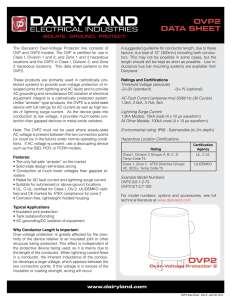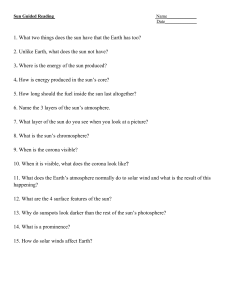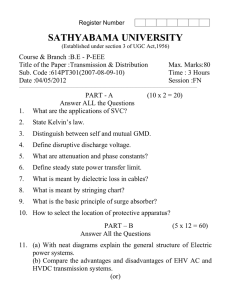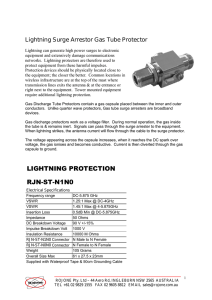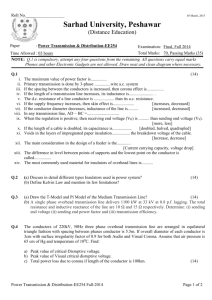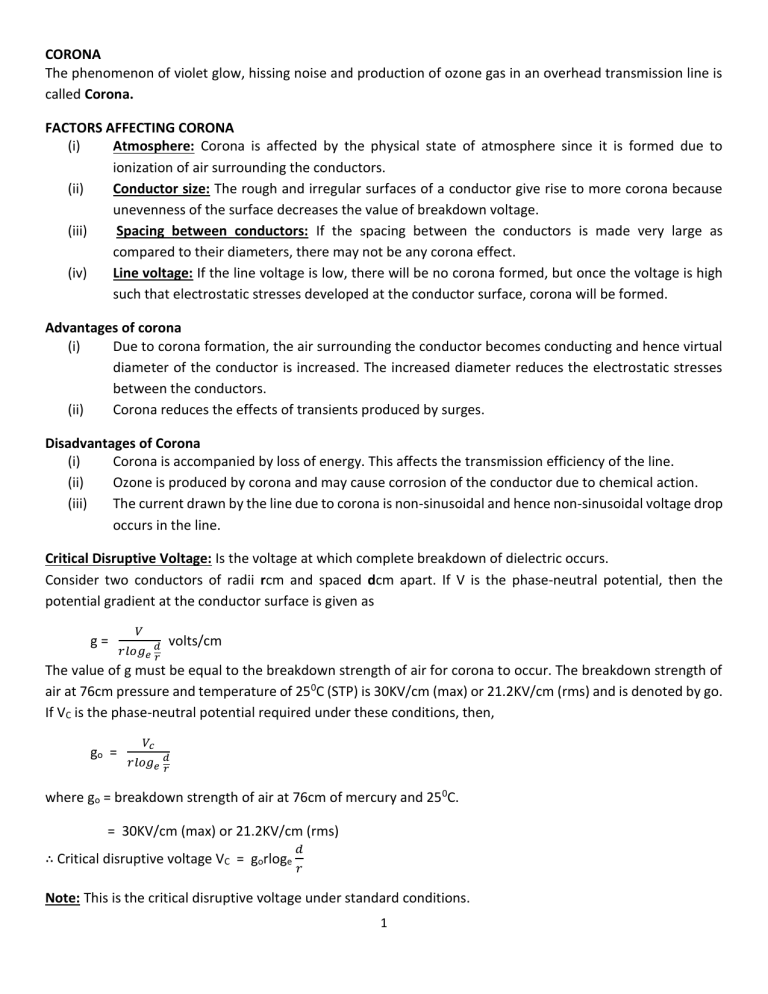
CORONA The phenomenon of violet glow, hissing noise and production of ozone gas in an overhead transmission line is called Corona. FACTORS AFFECTING CORONA (i) Atmosphere: Corona is affected by the physical state of atmosphere since it is formed due to ionization of air surrounding the conductors. (ii) Conductor size: The rough and irregular surfaces of a conductor give rise to more corona because unevenness of the surface decreases the value of breakdown voltage. (iii) Spacing between conductors: If the spacing between the conductors is made very large as compared to their diameters, there may not be any corona effect. (iv) Line voltage: If the line voltage is low, there will be no corona formed, but once the voltage is high such that electrostatic stresses developed at the conductor surface, corona will be formed. Advantages of corona (i) Due to corona formation, the air surrounding the conductor becomes conducting and hence virtual diameter of the conductor is increased. The increased diameter reduces the electrostatic stresses between the conductors. (ii) Corona reduces the effects of transients produced by surges. Disadvantages of Corona (i) Corona is accompanied by loss of energy. This affects the transmission efficiency of the line. (ii) Ozone is produced by corona and may cause corrosion of the conductor due to chemical action. (iii) The current drawn by the line due to corona is non-sinusoidal and hence non-sinusoidal voltage drop occurs in the line. Critical Disruptive Voltage: Is the voltage at which complete breakdown of dielectric occurs. Consider two conductors of radii rcm and spaced dcm apart. If V is the phase-neutral potential, then the potential gradient at the conductor surface is given as g= 𝑉 𝑟𝑙𝑜𝑔𝑒 𝑑 𝑟 volts/cm The value of g must be equal to the breakdown strength of air for corona to occur. The breakdown strength of air at 76cm pressure and temperature of 250C (STP) is 30KV/cm (max) or 21.2KV/cm (rms) and is denoted by go. If VC is the phase-neutral potential required under these conditions, then, go = 𝑉𝑐 𝑟𝑙𝑜𝑔𝑒 𝑑 𝑟 where go = breakdown strength of air at 76cm of mercury and 250C. = 30KV/cm (max) or 21.2KV/cm (rms) ∴ Critical disruptive voltage VC = gorloge 𝑑 𝑟 Note: This is the critical disruptive voltage under standard conditions. 1 Voltage Surge: A sudden rise in voltage for a very short duration on the power system is known as a voltage surge or transient voltage. E Wave tail Em 𝐸𝑚 2 0 t1 Time (µs) t2 Wave form of a voltage surge Causes of Over-voltage in Power System The over-voltages on a power system may be divided into two main categories. The internal causes and external causes. Internal causes of over-voltage: They are primarily due to oscillations set up the sudden changes in the circuit conditions. (i) (ii) (iii) (iv) Switching Surges: These are over-voltages which are produced on the power system due to switching operations. Insulation Failure: The most common case of insulation failure in a power system is the grounding of conductor (i.e. insulation failure between line and earth) which may cause over-voltage in the system. Arcing Ground: The phenomenon of intermittent arc taking place in line to ground fault of a three phase system with consequent production of transient is called arcing ground. Resonance: Resonance in an electrical system occurs when inductive reactance of the circuit becomes equal to capacitive reactance. Resonance causes high voltage in electrical system. External causes of over-voltage: Lightning is the major cause of external over-voltage. An electric discharge between cloud and earth, between clouds or between the charges centers of the same cloud is known as Lightning. Lightning is a huge spark and takes place when clouds are charged to such a high potential with respect to earth or a neighbouring cloud that the dielectric strength of neighbouring medium (air) is destroyed. 2 Effects of Travelling Waves on Transmission Line. (i) The travelling waves produced due to lightning surges will shatter the insulators and may even wreck poles. (ii) If the travelling waves produced due to lightning hit the windings of a transformer or generator, it may cause considerable damage. (iii) If the arc is initiated in any part of the power system by the lightning stroke, this arc will set up very disturbing oscillations in the line. Protection against Lightning Surge The most commonly used devices for protection against lightning surges are; earthing screen, overhead ground wires and lightning arresters or surge diverters. (i) (ii) (iii) Earthing Screen: It consists of a network of copper conductors (shield or screen) mounted all over the electrical equipment in the sub-station or power station. The shield is properly connected to earth on at least two points through a low impedance. On the occurrence of direct stroke on the station, screen provides a low resistance path by which lightning surges are conducted to ground. Overhead Ground Wires: This is the most effective method of providing protection to transmission lines against direct lightning strokes. The ground wires are placed above the line conductors at such positions that practically all lightning strokes are intercepted by them. The ground wire are grounded at each tower or pole through as low resistance as possible. Lightning Arresters: They are protective devices which conducts the high voltage surges on the power system to the ground. The advantage of lightning arresters is that it protect the transmission lines against direct lightning strokes as well as against travelling waves. 3
